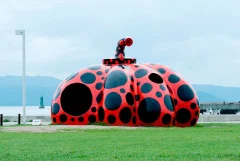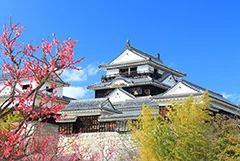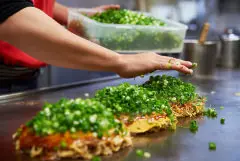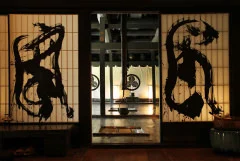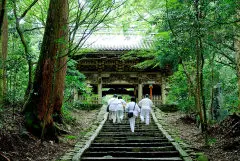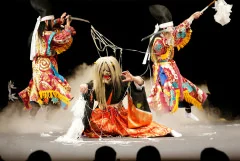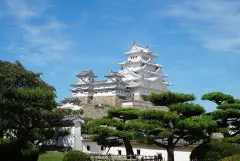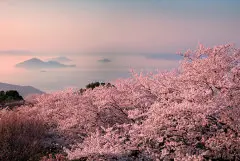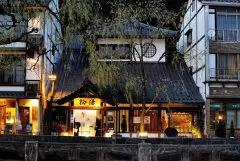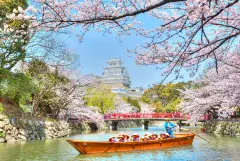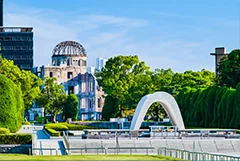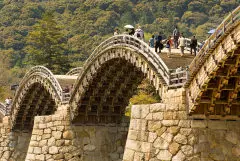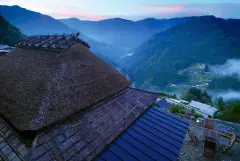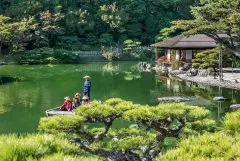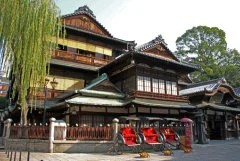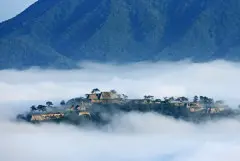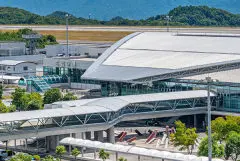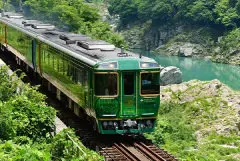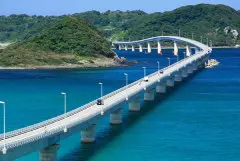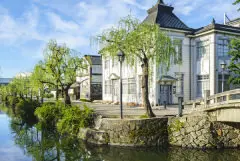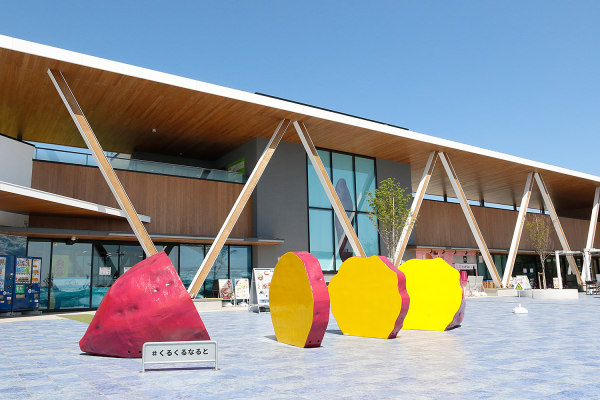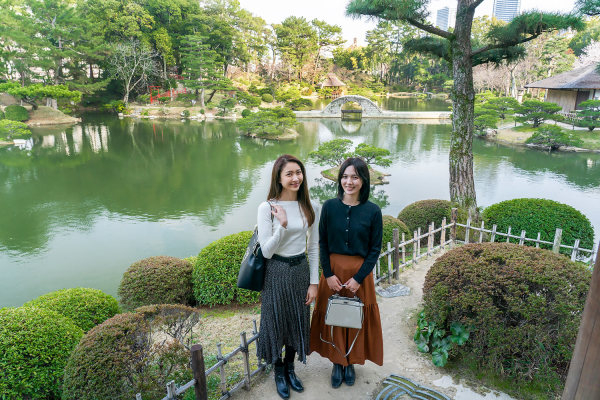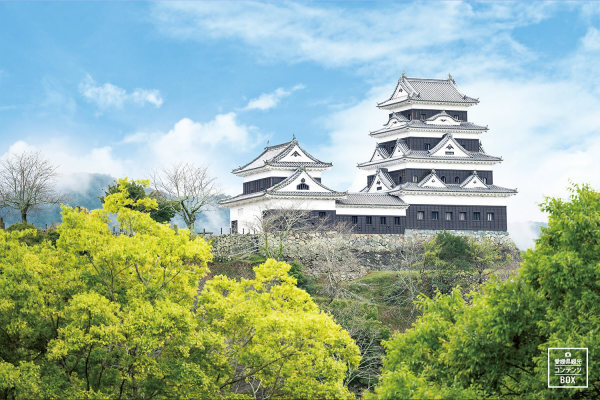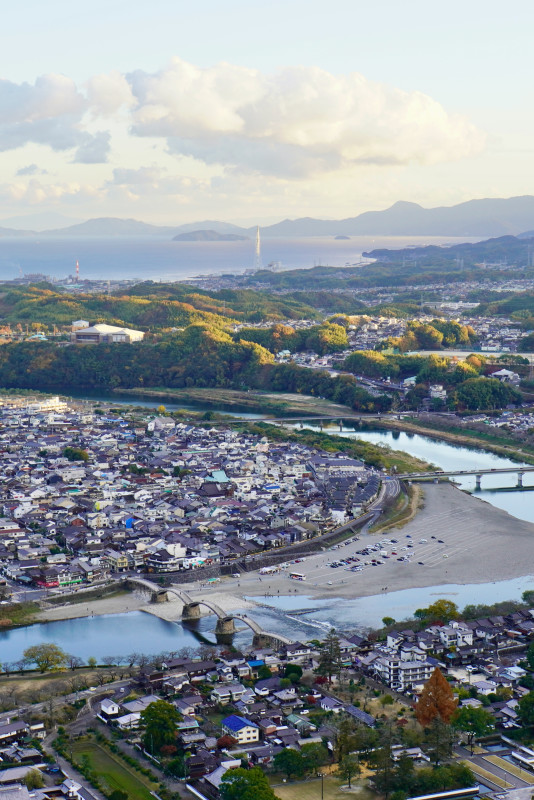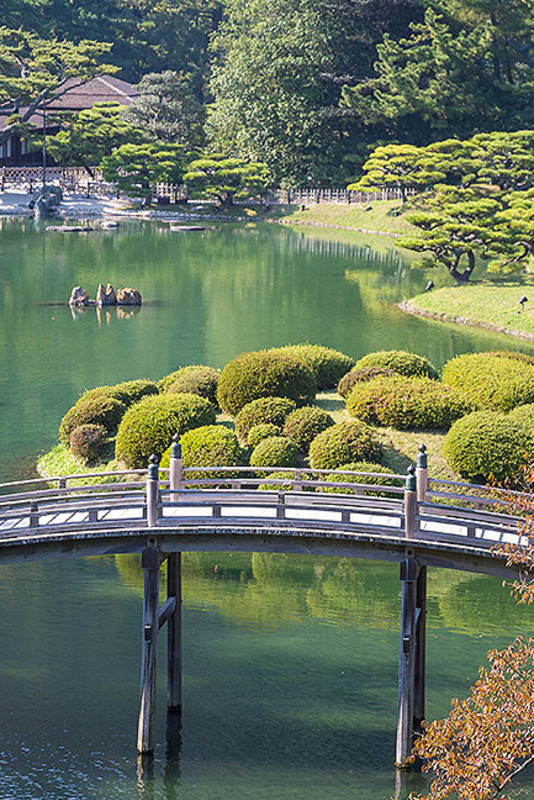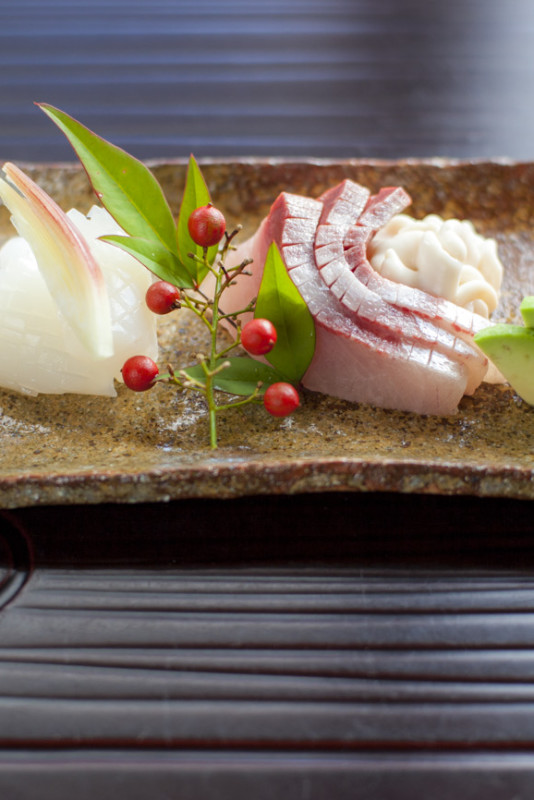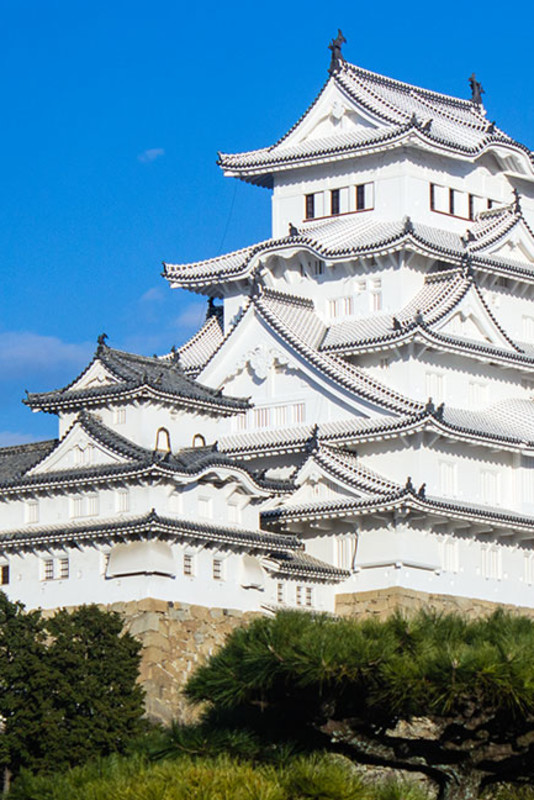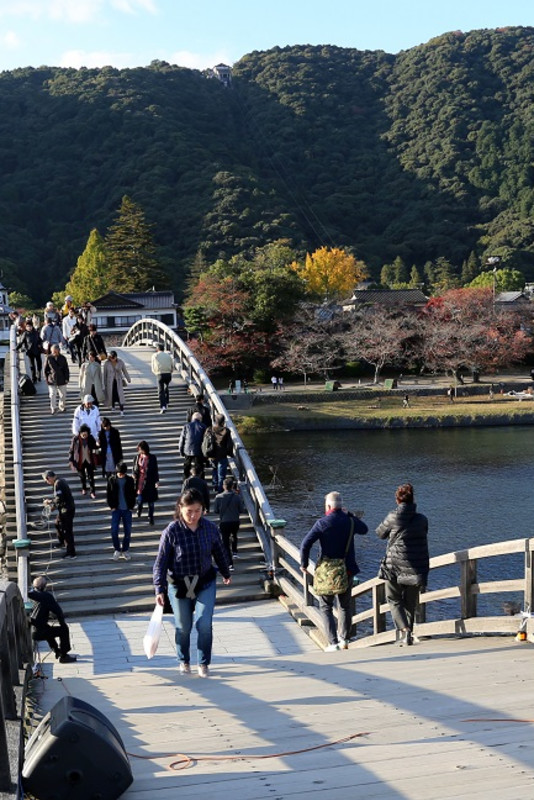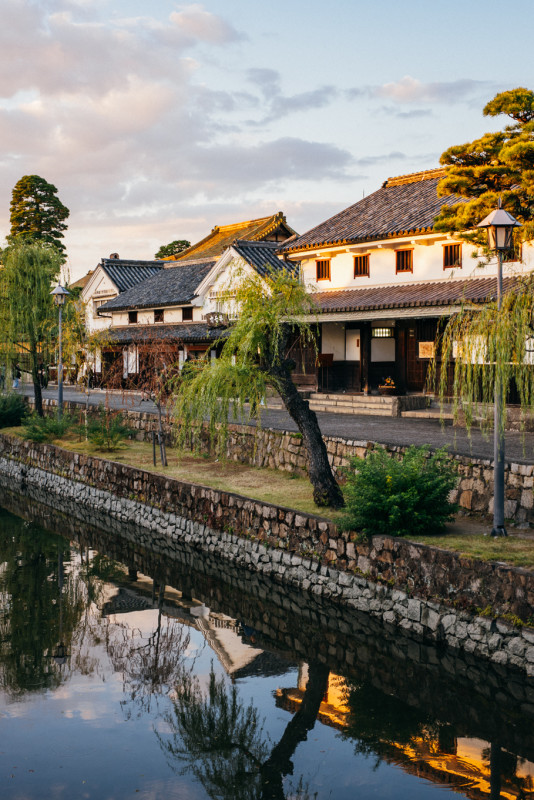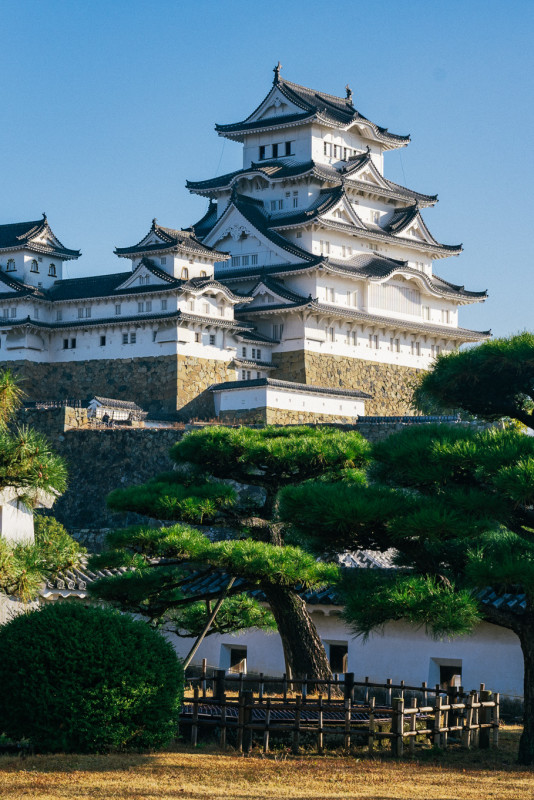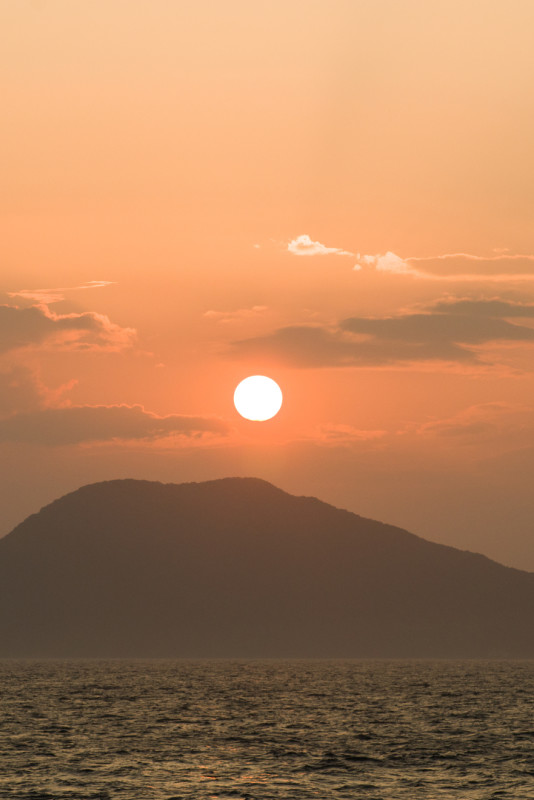Itineraries
A 3-day Journey through the History of Setouchi Samurai, Trade, and Culture

A 3-day journey through the history of Setouchi samurai, trade, and culture
This 3-day itinerary takes you from the historic international enclave on the hills of Kobe to the contrasting “Heron” and “Crow” Castles of Himeji and Okayama, before moving onto the beautifully-preserved traditional warehouse district in Kurashiki and the delightful port town of Onomichi, by way of a tiny art island.
- Day 1
- Kobe, Himeji and Okayama
Travel: Osaka to Kobe
・Take the local train from Osaka Station to Sannomiya Station (Approx 30 minutes)
Kobe, Japan’s gateway to the world and home of Kobe Beef
Explore the historic residences, cafes, and boutiques in the hillside streets of Kitano, home to foreign dignitaries and traders after Japan reopened to the world in the 19th century after over two hundred years of isolation.
A five-minute walk from Shin-Kobe Station the Kobe-Nunobiki Ropeway whisks you up to Kobe Nunobiki Herb Gardens. An expansive facility with 12 beautifully landscaped gardens, the views over Kobe from upper ropeway station are fantastic. Near the lower station is the highly-rated
Takenaka Carpentry Tools Museum. Well-explained exhibits cover the history of Japanese woodworking from prehistoric times and provide visitors with knowledge and an appreciation of the craft that will enhance future visits to temples, shrines, and other traditional buildings on this itinerary and elsewhere in Japan.
With a busy afternoon ahead, an early lunch of Kobe’s world-famous Kobe Beef will ensure that you have plenty of energy and make for an unforgettable dining experience.
Travel: Kobe to Himeji
・Take the Shinkansen from Shin-Kobe to Himeji (Approx 20 minutes)
Experience the enchanting beauty and rich history of Himeji Castle
UNESCO World Heritage Site Himeji Castle stands as a testament to Japanese architectural brilliance. The sprawling castle grounds boast an impressive collection of over eighty meticulously designed buildings, the centerpiece of which is the Tenshu-gun, a complex comprising the donjon, keeps, and connecting structures, which showcase an intricate and highly advanced system of defense that dates to feudal times. The masterful construction and exquisite woodwork are awe inspiring, as are the elegant white plastered walls, from which its nickname, ‘White Heron Castle,’ comes.
In spring, over 1000 cherry trees come into bloom, creating breath-taking scenes viewable from both outside and inside the grounds. In the autumn, the same trees turn fiery red slightly earlier than when the region’s maples begin to change color.
Take tea in the serene ambiance of Soju-an tea house within one nine distinct gardens that make up Kokoen Garden next to the castle.
Travel: Himeji to Okayama
・Take the Shinkansen from Himeji to Okayama (Approx 25 minutes)
Okayama Kakushi Sushi: A local speciality with a fascinating history
Kakushi or Bara Sushi is a traditional dish that emerged in response to an ordinance issued by a local lord restricting meals to "one soup and one side dish." To circumvent the decree, an abundant assortment of fish and seasonal vegetables were heaped atop sushi rice, to create an opulent dish that could still technically be described as a single side dish. Not only visually stunning, kakushi sushi also has a delectable flavor profile. Each bite is a symphony of textures and tastes, as the freshness of the fish and the crispness of the vegetables mingle with the subtle tang of the vinegar-infused rice.
Kibizen in the Okayama Granvia Hotel is a great place to try this historical and tasty dish.
Accommodation: ANA Crowne Plaza Okayama
Just a 1-minute walk from JR Okayama Station, the only international hotel in the city, ANA Crowne Plaza Okayama offers exceptional service and convenience. The rooms are of simple, modern design and are the perfect place to relax after a full day of cultural exploration and to make sure you are refreshed and ready to explore the city the next day.
If you visit during summer or autumn, be sure to check the schedule for the annual illumination of Okayama Castle’s grounds and Korakuen Garden. The gardens are open later than usual and look very pretty.
URL: https://www.crowneplaza.com/hotels/jp/ja/okayama/okjja/hoteldetail/
- Day 2
- Okayama, Kurashiki and Onomichi
Okayama Castle and Korakuen Garden
The main building of Okayama Castle may be a reconstruction, but the imposing black facade, from which it earned its nickname, 'Crow Castle', provides a striking contrast to the pristine white walls of Himeji Castle. Positioned gracefully alongside the flowing Asahi River, Okayama Castle invites you to relax and absorb the breath-taking views of the castle itself and adjacent Korakuen Garden. Explore distinctive architectural features of Japanese castle design, discover workshops dedicated to the region’s famous Bizen-yaki pottery, and don traditional princess or feudal lord attire for a memorable photoshoot.
Korakuen Garden, ranked among the top three in the country, is a harmonious fusion of meticulously manicured landscapes, tranquil ponds, and enchanting traditional architecture. Immerse yourself in the timeless beauty of sculptured landscapes, traditional tea houses, and vibrant koi ponds—a symbol of wealth and power in Japanese culture. Try a Japanese tea ceremony in one of the garden’s tea houses and, at certain times of the year, some of the formal buildings host tea ceremonies where masters host and teach you the art of tea.
To fully immerse yourself in this rich cultural enclave, we recommend obtaining the Okayama Castle and Korakuen Garden Pass.
URL: https://okayama-castle.jp/home-en/
Travel: Okayama to Kurashiki
・Take a local train from Okayama Station to Kurashiki Station (Approx 10-20 minutes)
Kurashiki Bikan Historical District
Kurashiki prospered as a political center and trade hub after coming under the direct control of the Tokugawa Shogunate in 1642. Kurashiki’s fortune continued during the late 19th century and early 20th century, this time led by the textile industry. As the town escaped relatively unscathed in WWII, the mix of traditional Japanese and Western-style warehouses and mansions built along the Kurashiki River still remain. In the Bikan Historical District, you can take a walk through history, from the time of the samurai to Japan’s emergence as an industrial powerhouse.
Kurashiki’s historical quarter is not only expertly preserved, but also quite lively. A wide variety of shops, cafes and eateries, from traditional to trendy, are based in the warehouses, and it is a pleasure to wander around the town. Traditional boat tours along the Kurashiki Canal that flows through the district, allow you to admire the town's charm from a different perspective. Several places rent kimono and yukata for visitors to fully embrace the historical vibe.
Museum and culture lovers are well catered for within this compact, walkable area. Prime among Kurashiki’s museums is the Ohara Museum of Art which has an impressive collection of internationally acclaimed masterpieces. The Kurashiki Museum of Folkcraft and Kurashiki Archaeological Museum are appropriately housed in 200-year-old rice granaries. Ivy Square, a red brick facility on the site of a former cotton mill, offers a variety of workshop activities, including Bizen-yaki pottery, which is one of Japan's six ancient pottery styles.
There are many places to eat around Kurashiki’s historical district, but, if you are looking for a refreshingly sweet treat, one in particular deserves a special mention. Kurashiki Momoko is very popular for its gorgeous and tasty parfaits, desserts and cakes featuring seasonal fruits, including many that are locally grown in Okayama Prefecture. Okayama’s mild climate and technical skill of its farmers have earned it the nickname of the “Kingdom of Fruit” and Kursashiki Momoko is a great place to sample some. There are four outlets to choose from, but the original Sohonten has an impressive collection of French Art Nouveau glassware by Émile Gallé on display.
Travel: Kurashiki to Onomichi
・Take a local train from Kurashiki Station to Shin-Kurashiki Station (Approx 10 minutes)
・Take the Shinkansen from Shin-Kurashiki Station to Shin-Onomichi Station (Approx 20 minutes)
・Take a taxi to Bella Vista Spa & Marina Hotel (Approx 30 minutes)
Accommodation: Bella Vista Spa & Marina Onomichi
After two history and culture-packed days, you deserve to kick back, relax and treat yourself to a stay at Bella Vista Spa & Marina Onomichi. Stunning sunsets, superb Seto Inland Sea views, and a resort-style terrace area with pools, lounge and dining areas, all telling you that it’s time to just “be”. The hotel’s “Kilometer Zero” concept highlights its commitment to showcasing the very best of the Setouchi region’s food, industry and culture through its use of local ingredients from the sea and the mountains of Hiroshima and the Inland Sea in its restaurants and local denim, Kasuri fabric and furniture in its design. With top class spa treatments also on offer, you may find it very difficult to leave.
URL: https://www.bella-vista.jp/en/
- Day 3
- Onomichi
Travel: Tsuneishi Port to Momoshima Island
・Take a taxi from Bella Vista Spa & Marina Onomichi to Tsuneishi Port (Approx 5 minutes)
・Take the ferry from Tsuneishi Port to Momoshima Island (Approx 10 minutes)
・Alternatively, take a taxi direct from Bella Vista Spa & Marina Onomichi to Onomichi (Approx 40 minutes)
Art Base Momoshima
An interesting way to access Onomichi from Bella Vista is by the colorful polka-dot ferry which leaves from Tsuneishi Port, calling at the island of Momoshima on the way. Momoshima’s main attraction is Art Base Momoshima; a contemporary art gallery and space in a repurposed school which had closed due to island depopulation. The brainchild of Yukinori Yanagi, the artist best known for his World Flag Ant Farm and the incredible Seirensho installation on the island of Inujima, Art Base Momoshima is as much a rural revitalization project as it is an art project.
Travel: Momoshima Island to Onomichi
・Take the ferry from Momoshima Island to Onomichi (Approx 25-50 minutes)
Lose yourself in Onomichi
Whether you visit the temples and cats on Mt Senkoji, the retro shopping arcade, or the stylish boutique hotels and restaurants, Onomichi has something for everyone. Begin your adventure at Onomichi U2, a repurposed warehouse that has been transformed into a must-visit destination. The complex boasts stylish shops, a restaurant and the Hotel Cycle – a chic hotel designed and built for cyclists. If you would like to sample some of the Shimanami Kaido cycle route, which starts from just across the Onomichi Channel, bicycles are available for rent from the Giant store here or from the public rental bike service adjacent.
Ride the ropeway to the top of Mt Senkoji for a panoramic view of Onomichi and Mukaishima Island across the strait and say hello to the cats along Neko no Hosomichi (Cat Alley) on the way down. Stroll along the retro shopping arcade and explore the maze of alleyways branching off the main street.
Seek out Tea Stand Gen, a charming tea shop with a loyal fanbase who travel from far and wide to sample the delicious organically grown teas. Those who prefer something a little stronger might like to check out Onomichi Brewery, run by a friendly couple who use local agricultural by-products and produce in the brewing process. Join one of the lines that snake from the town’s most popular shops serving the town’s soul food, Onomichi Ramen, made with soy sauce based soup, locally caught fish and pork fat.
LOG, a boutique hotel designed by renowned architect Bijoy Jain, sits halfway up on Mt. Senkoji overlooking Onomichi. This one-of-a-kind accommodation is the perfect choice for anyone looking to spend an extra night in Onomichi.

